- Design Approaches
- Posted
Deconstruct Ireland

The environmental impact of the built environment extends far beyond energy consumption and carbon emissions throughout a building’s intended lifespan. Architect and sustainable design consultant Sinéad Cullen of DW EcoCo & BE Architecture explains why there’s a need to design buildings that can be deconstructed rather than destroyed once they reach their end of life, and looks at the obstacles to be overcome to make this happen.
It is estimated that globally 1.6 tonnes of raw materials are produced or extracted per person per year (1). According to the World Wildlife Fund 33 per cent of the natural world has been consumed in the last 25 years at a rate that is increasing faster than nature can replace. 40 per cent of the material used by the world economy today is used in the construction, operation and maintenance of buildings. Globally construction and demolition (C&D) waste is one of the biggest contributors to landfill. The European Commission estimates that 500 million tonnes of construction and demolition waste is produced every year in the European Union.
Huge amounts of energy are required to create buildings – from energy used for the extraction of raw material, through to energy used in demolition/deconstruction. Studies (2) show that the embodied energy in residential buildings is equal to approximately ten years of operational energy and for commercial buildings the figure is closer to 40-50 years. It has been shown from the assessment of demolition waste that 45 per cent of a building’s embodied energy can end up lost in landfill (3).
These issues are globally and nationally relevant to the way in which we put buildings together and interestingly how we take them apart and re-use or recycle their component parts. Thinking about how a building will be deconstructed before it has been constructed might seem counterintuitive but this way of thinking can significantly reduce the building’s impact on the environment and has the potential to create jobs and reduce Ireland’s dependence on material imports at a time when we need such an approach most.
Design for deconstruction or DfD is a concept that has been growing in manufacture as a result of “extended producer responsibility” legislation and the resulting constraints on the production of waste and pollution. Within the construction industry DfD is described as the design of buildings so that their constituent parts can be easily removed for recycling or re-use, in order to reduce the production of waste going to landfill, thereby reducing waste disposal costs and minimising the consumption of natural resources through substitution with recovered materials. In addition DfD holds many possibilities for reducing building environmental impacts and reducing building costs.
Materials selected in order to be easily extracted from a building have the additional benefit of a reduced environmental toxicity, due to their lower adhesive and sealant content, thereby reducing worker and occupant exposure to volatile organic compound emissions, and further reducing on-site, the environmental impacts of demolition.
By designing materials and building components to be removed, the vast stockpile of materials currently being stored in towns and cities could be recovered for generations to come. The re-use and recycling of building materials would directly reduce primary energy consumption required for extraction and primary manufacture, therefore reducing carbon dioxide emissions, dependency on imported fossil fuels for energy and preserving the embodied energy already invested.
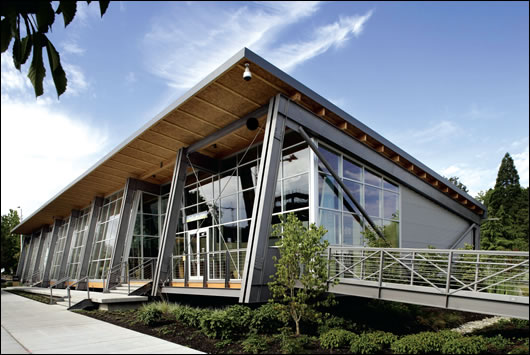
The Pavilion in the Park at South Lake Union, Seattle separates at three integrated joints to break into four separate modules. The building sits lightly atop short concrete piers allowing the grade and vegetation to run uninterrupted beneath. Gangway ramps with integrated hinged joints can adapt to the topography of future locations
1 Wackernagel M, Chambers N, Simmons C, 2000 Sharing Nature’s Interest. Ecological Footprints as an Indicator of Sustainability Earthscan London
2 ‘Design for Disassembly to recover embodied energy’. In Szokolay, Steven S., Eds. Proceedings The 16th International Conference on Passive and Low Energy Architecture. September 1999, Melbourne-Brisbane-Cairns, Australia. [online] PLEA Available on: http://eprints.qut.edu.au/view/person/Crowther,_Philip.html
3 ‘Designing for Disassembly to extend service life and increase sustainability’. In Lacasse, Michael A. & Vanier, Dana J.,Eds. Proceedings Durability of Building Materials and Components. 8th International Conference on Durability Vancouver Canada May/June 1999. [online]. Available on: http://eprints.qut.edu.au/view/person/Crowther,_Philip.htm

In the 1920’s Buckminster Fuller designed the prototype Dymaxion house, now housed in the Henry Ford Museum, Michigan. The house was designed to be serviced, repaired, replaced and recycled by the manufacturer
The use of DfD can help meet the market’s demand for buildings that are adaptable and flexible in design and can meet occupant requirements for adaptability. By potentially reducing time and labour requirements DfD can help make the deconstruction industry more cost-effective by reducing expenses and labour requirements. It can also ensure the economic viability of the management of materials from their use, adaptation and removal from buildings by ensuring their increased value for re-use.
The theory and practice of DfD is not new but is rather the modern application of older methods, of which there are many examples. The disassembly and reassembly of the timber frame inner sanctum of the Ise Shrine has taken place every twenty years for the last 1300 years. In 1851 the Crystal Palace was erected in Hyde Park and was then disassembled, transported and reassembled in Sydenham. In the 1920’s Buckminster Fuller designed the prototype Dymaxion house which was to be serviced, repaired, replaced and recycled by the manufacturer. Around the same time Ray and Charles Eames designed buildings employing technology not commonly used in construction in order to improve, and provide access to components for disassembly. In the 1960s and 1970s Cedric Price, Archigram and the Japanese Metabolists designed adaptable buildings based on a large steel structural frame with interchangeable components and units for easy adaptation and replacement and in more recent times the Herman Miller Factory by Nicholas Grimshaw was designed with interchangeable cladding panels to suit internal uses.
A number of organisations have been investigating the application of DfD ideas in the construction industry. In 1999 the International Council for Research and Innovation in Building Construction formed Task Group 39 on deconstruction to carry out global studies on DfD. In the UK SEDA (4) have developed guidelines for designers on the design of buildings for deconstruction and the City of Seattle, in the US, has developed its own set of DfD guidelines for application within the city.
Current practice in Ireland
There are a number of areas relevant to the application of DfD in Ireland such as the way in which we currently deal with construction and demolition waste, government policy and legislation, Ireland’s energy consumption and the role of the various construction industry members.
Currently the Department of the Environment, Heritage and Local Government identifies the construction industry as one of the biggest producers of waste in Ireland. In 1998 a National Policy on Waste Management required the recycling of at least 85 per cent of C&D waste by 2013. The EPA’s National Waste Report 2006 estimated that in that year circa 16.8 million tonnes of C&D waste was generated in Ireland with a recovery rate of 79.5 per cent. However the figure for building material (other than site derived stones and soils) accounts for only 35.8 per cent of the total waste.
The EPA recognise that their figures do not accurately reflect the reality of C&D waste disposal and recovery. They note that “Over 80 per cent of the waste found in unauthorised landfills was C&D waste” – waste which is not accounted for in their reports. C&D waste figures come from waste collection permit holders who report to local authorities. However an estimated 46 per cent of operators fail to report on waste collection, accounting for an estimated 2 million tonnes of C&D waste. The EPA estimate in their 2006 report that over 3 million tonnes of waste was unaccounted for. In order to curb this, they have requested that local authorities report on the numbers of waste collectors in their area and on any failures to report. They recommend that the National Construction and Demolition Waste Council (NCDWC), a subsidiary of the CIF, improve data reporting rates, take responsibility for compiling data directly from the C&D sector rather than from collectors and focus on the prevention and recycling of the non-soil and stones fraction of C&D waste in order to improve the level of recycling within the industry.
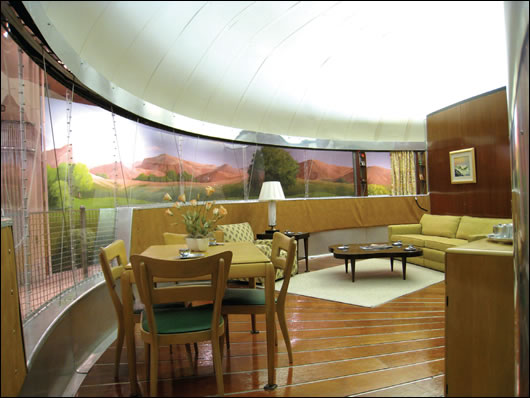
Inside the prototype Dymaxion house, now housed in the Henry Ford Museum, Michigan. The house was designed to be serviced, repaired, replaced and recycled by the manufacturer
4 Scottish Ecological Design Association

The Ise shrine, Japan. The disassembly and reassembly of the timber frame inner sanctum of the shrine has taken place every 20 years for the last 1300 years
This year the EPA stated that in approximately four and a half years Ireland will run out of landfill space.(5) In order to help reduce the amount of landfill from C&D waste, a e15/tonne Levy on the landfill of waste was introduced in 2002, in June 2008 this figure was raised to e20 and in June 2009 it will rise to e25. Prices vary substantially throughout the country for landfill gate fees but from national research WYG have found that they cost on average in the region of e120 per tonne of waste with the required landfill levy added to this. As landfill taxes and gate fees continue to increase it will be in the best interest of contractors and clients to reduce the amount of waste being sent to landfill and instead recycle or reuse it.
At present in Ireland the demand for reclaimed and recycled building materials is low, with a focus mainly on antiques, and the required infrastructure for reclaiming and re-using does not exist. The government waste management plans focus on recycling rather than on reuse. Placing similar emphasis on reuse makes sense, as reuse requires less energy, and such a strategy would provide a stable market for re-usable products and a system for collating information on re-usable building materials. With the development of the correct infrastructure the reusable materials market could develop and become profitable. This would require the actions of government, the NCDWC and entrepreneurs to develop transportation and sorting mechanisms and create reuse and recycling incentives necessary to develop a viable and profitable materials market.
Policy and legislation
Currently there is no mention of DfD in any Irish planning or building legislation, however there has been some movement within the public sector. Recently South Dublin County Council has introduced a sustainability toolkit for the Clonburris eco-district SDZ which includes specific requirements to design for ease of deconstruction, (6) and in the OPW – as part of their PPP competition requirements for new government departments – requirements include for the design of certain components for easy replacement and disposal, in accordance with best practice for disassembly, reuse, recycling or final disposal in an environmentally acceptable way”. (7) These are just two areas within the government structure in which further developments of DfD ideas are possible. Other opportunities exist in health and safety and conservation. Within the Safety Health and Welfare at Work (Construction) Regulations 2006 building designers are required to write construction and maintenance methodologies for certain building types. This information could be expanded on to include disassembly methodologies while minimising additional administrative work.
The conservation principles as noted in the DOEHLG’s Architectural Heritage Protection guidelines include repairing rather than replacing, promoting minimal intervention, use of appropriate materials and methods and the principle of reversibility.(8) As architects are required to obtain conservation accreditation in order to work on protected structures, many therefore are trained in basic DfD principles and so this can easily be expanded on.
There may be significant resistance to changes in legislation from sectors of the construction industry for varying reasons, but it must be understood that through the income from material salvage, the generation of new jobs in deconstruction and the development of materials re-use technology, the time and costs of educating and incorporating DfD ideas into the construction industry could be balanced or outweighed. Future policy changes might include DfD principles in planning and building regulations. The government could introduce grants for research and development of reuse and recycling technologies to encourage new market development and as government departments direct the development of many schools, social housing projects, offices and hospitals they could demonstrate by leading. As clients with a long-term interest in a building’s adaptability, DfD could prove valuable to them and their building occupants.
Irish construction industry
DfD is not an approach the industry is familiar with or is yet equipped to implement on a large scale. Within the industry the demolition of buildings is predominantly referred to rather than their deconstruction and neither term is mentioned in Irish building contracts, warranties or insurances. The associated time required for deconstruction rather than demolition is a factor in buildings not designed with this intent and the nature of speculative development where buildings are designed to be sold does not encourage the greater investments required for DfD.
The conservative nature of the industry and Ireland’s traditions of building with particular materials and methods, such as the use of concrete block construction, make separation and disassembly impossible. Applying the principles of DfD during the design process could help focus on detailed design, for instance using alternative materials with mechanical connections for easy of deconstruction.
There is more of an incentive to recycle or reuse more valuable materials, however future trends in the construction material markets are uncertain and future external forces are hard to foresee, as is the value of specific materials.
5 DLRCC- http://www.dlrcoco.ie/env/education/LEAP/wasteheirarchy.htm
6 South Dublin County Council (2007). Part G Sustainability Toolkit and Design Standards.
7 Schedule 4: Construction Requirements, Instructions to Tenderers, PPP Briefing Document Output Specification for Decentralised Government Offices. Dublin: OPW
8 The Department of Arts, Heritage, Gaeltacht & the Islands, and Dúchas – The Heritage Service. (Draft December 2001) Architectural Heritage Protection – Guidelines for Planning Authorities. Dublin: Environmental Publications
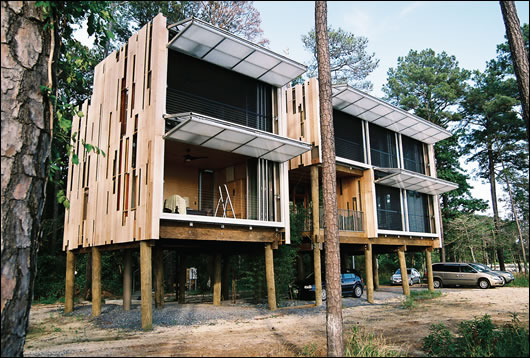
The Loblolly House represents a novel approach to pre-fabricated and modular housing concepts. The house introduces off-site fabricated elements which are detailed for on-site assembly, future disassembly and redeployment
Implementation
In order to be integrated successfully, DfD needs to be implemented by all parties involved in construction, from central government, to architects and contractors.
Client-will, capital cost and time constraints are intertwined issues which restrict the use of DfD. For most clients increased responsibility with DfD would only occur up to the construction stage, as most do not retain an interest in a property after completion. Those who do will see the additional benefits when buildings are renovated or deconstructed. The use of cost-benefit analysis studies to assess the long-term benefits of the use of DfD principles, including the choice of high quality materials at the early design stages, would highlight their economic benefits. Tax incentives, further waste levies or the introduction of new legislation requiring increased re-use of materials would also encourage DfD implementation.
Designer responsibility would increase initially with the use of DfD. Designers would be required to increase their knowledge of the subject, produce separate deconstruction drawings, resolve associated insurance and liability issues and seek warranties for reused materials. DfD would require increased off site prefabrication with more front-loaded work and greater integration between team members at earlier design stages.
By taking a lead from organisations such as the CIB and SEDA, the RIAI, IEI and the CIF could implement educational programs that could change the way we work together in design teams, reduce our impact on the environments and create necessary jobs within the industry. Given the recent publication of the SEDA and Seattle guides for deconstruction, there now are two frameworks from which to adapt Irish DfD guidelines.
Separate deconstruction contracts could be developed so that separate contractors could be procured, thereby clarifying contractors’ responsibilities and easing the time pressure on the main contractor and reducing demolition to a minimum. Suppliers and manufacturers could focus on the development of materials and components that are easily reused. None of this can work unless the appropriate infrastructure is in place to allow for the movement of materials though circular cycles. For entrepreneurs there are huge opportunities to develop services to designers, contractors and clients where salvaged materials are collected, collated and made available.
DfD is a common sense approach to the design of buildings which takes into consideration the consequences of design decisions. The use of DfD could significantly reduce the construction industry’s energy consumption, its dependence on building material imports, and the quantities of waste sent to landfill. The supply of useable building materials could be guaranteed for future generations and indoor environments could be made healthier. This current economic situation is sparking an interest in creating opportunities within the construction industry. With DfD, employment opportunities exist for the design, sorting, transportation and recycling of materials and manufacturing for reuse. Rather than an additional nuisance, DfD presents opportunities in Ireland to stabilise and create a new model for the construction industry that works around circular, sustainable materials flows.

Eames house, Los Angeles. Architects Ray and Charles Eames designed buildings employing technology not commonly used in construction in order to improve, and provide access to components for disassembly

The environmental impact of the built environment extends far beyond energy consumption and carbon emissions throughout a building’s intended lifespan. Architect and sustainable design consultant Sinéad Cullen of DW EcoCo & BE Architecture explains why there’s a need to design buildings that can be deconstructed rather than destroyed once they reach their end of life, and looks at the obstacles to be overcome to make this happen.
It is estimated that globally 1.6 tonnes of raw materials are produced or extracted per person per year (1). According to the World Wildlife Fund 33 per cent of the natural world has been consumed in the last 25 years at a rate that is increasing faster than nature can replace. 40 per cent of the material used by the world economy today is used in the construction, operation and maintenance of buildings. Globally construction and demolition (C&D) waste is one of the biggest contributors to landfill. The European Commission estimates that 500 million tonnes of construction and demolition waste is produced every year in the European Union.
Huge amounts of energy are required to create buildings – from energy used for the extraction of raw material, through to energy used in demolition/deconstruction. Studies (2) show that the embodied energy in residential buildings is equal to approximately ten years of operational energy and for commercial buildings the figure is closer to 40-50 years. It has been shown from the assessment of demolition waste that 45 per cent of a building’s embodied energy can end up lost in landfill (3).
These issues are globally and nationally relevant to the way in which we put buildings together and interestingly how we take them apart and re-use or recycle their component parts. Thinking about how a building will be deconstructed before it has been constructed might seem counterintuitive but this way of thinking can significantly reduce the building’s impact on the environment and has the potential to create jobs and reduce Ireland’s dependence on material imports at a time when we need such an approach most.
Design for deconstruction or DfD is a concept that has been growing in manufacture as a result of “extended producer responsibility” legislation and the resulting constraints on the production of waste and pollution. Within the construction industry DfD is described as the design of buildings so that their constituent parts can be easily removed for recycling or re-use, in order to reduce the production of waste going to landfill, thereby reducing waste disposal costs and minimising the consumption of natural resources through substitution with recovered materials. In addition DfD holds many possibilities for reducing building environmental impacts and reducing building costs.
Materials selected in order to be easily extracted from a building have the additional benefit of a reduced environmental toxicity, due to their lower adhesive and sealant content, thereby reducing worker and occupant exposure to volatile organic compound emissions, and further reducing on-site, the environmental impacts of demolition.
By designing materials and building components to be removed, the vast stockpile of materials currently being stored in towns and cities could be recovered for generations to come. The re-use and recycling of building materials would directly reduce primary energy consumption required for extraction and primary manufacture, therefore reducing carbon dioxide emissions, dependency on imported fossil fuels for energy and preserving the embodied energy already invested.

The Pavilion in the Park at South Lake Union, Seattle separates at three integrated joints to break into four separate modules. The building sits lightly atop short concrete piers allowing the grade and vegetation to run uninterrupted beneath. Gangway ramps with integrated hinged joints can adapt to the topography of future locations
1 Wackernagel M, Chambers N, Simmons C, 2000 Sharing Nature’s Interest. Ecological Footprints as an Indicator of Sustainability Earthscan London
2 ‘Design for Disassembly to recover embodied energy’. In Szokolay, Steven S., Eds. Proceedings The 16th International Conference on Passive and Low Energy Architecture. September 1999, Melbourne-Brisbane-Cairns, Australia. [online] PLEA Available on: http://eprints.qut.edu.au/view/person/Crowther,_Philip.html
3 ‘Designing for Disassembly to extend service life and increase sustainability’. In Lacasse, Michael A. & Vanier, Dana J.,Eds. Proceedings Durability of Building Materials and Components. 8th International Conference on Durability Vancouver Canada May/June 1999. [online]. Available on: http://eprints.qut.edu.au/view/person/Crowther,_Philip.htm

In the 1920’s Buckminster Fuller designed the prototype Dymaxion house, now housed in the Henry Ford Museum, Michigan. The house was designed to be serviced, repaired, replaced and recycled by the manufacturer
The use of DfD can help meet the market’s demand for buildings that are adaptable and flexible in design and can meet occupant requirements for adaptability. By potentially reducing time and labour requirements DfD can help make the deconstruction industry more cost-effective by reducing expenses and labour requirements. It can also ensure the economic viability of the management of materials from their use, adaptation and removal from buildings by ensuring their increased value for re-use.
The theory and practice of DfD is not new but is rather the modern application of older methods, of which there are many examples. The disassembly and reassembly of the timber frame inner sanctum of the Ise Shrine has taken place every twenty years for the last 1300 years. In 1851 the Crystal Palace was erected in Hyde Park and was then disassembled, transported and reassembled in Sydenham. In the 1920’s Buckminster Fuller designed the prototype Dymaxion house which was to be serviced, repaired, replaced and recycled by the manufacturer. Around the same time Ray and Charles Eames designed buildings employing technology not commonly used in construction in order to improve, and provide access to components for disassembly. In the 1960s and 1970s Cedric Price, Archigram and the Japanese Metabolists designed adaptable buildings based on a large steel structural frame with interchangeable components and units for easy adaptation and replacement and in more recent times the Herman Miller Factory by Nicholas Grimshaw was designed with interchangeable cladding panels to suit internal uses.
A number of organisations have been investigating the application of DfD ideas in the construction industry. In 1999 the International Council for Research and Innovation in Building Construction formed Task Group 39 on deconstruction to carry out global studies on DfD. In the UK SEDA (4) have developed guidelines for designers on the design of buildings for deconstruction and the City of Seattle, in the US, has developed its own set of DfD guidelines for application within the city.
Current practice in Ireland
There are a number of areas relevant to the application of DfD in Ireland such as the way in which we currently deal with construction and demolition waste, government policy and legislation, Ireland’s energy consumption and the role of the various construction industry members.
Currently the Department of the Environment, Heritage and Local Government identifies the construction industry as one of the biggest producers of waste in Ireland. In 1998 a National Policy on Waste Management required the recycling of at least 85 per cent of C&D waste by 2013. The EPA’s National Waste Report 2006 estimated that in that year circa 16.8 million tonnes of C&D waste was generated in Ireland with a recovery rate of 79.5 per cent. However the figure for building material (other than site derived stones and soils) accounts for only 35.8 per cent of the total waste.
The EPA recognise that their figures do not accurately reflect the reality of C&D waste disposal and recovery. They note that “Over 80 per cent of the waste found in unauthorised landfills was C&D waste” – waste which is not accounted for in their reports. C&D waste figures come from waste collection permit holders who report to local authorities. However an estimated 46 per cent of operators fail to report on waste collection, accounting for an estimated 2 million tonnes of C&D waste. The EPA estimate in their 2006 report that over 3 million tonnes of waste was unaccounted for. In order to curb this, they have requested that local authorities report on the numbers of waste collectors in their area and on any failures to report. They recommend that the National Construction and Demolition Waste Council (NCDWC), a subsidiary of the CIF, improve data reporting rates, take responsibility for compiling data directly from the C&D sector rather than from collectors and focus on the prevention and recycling of the non-soil and stones fraction of C&D waste in order to improve the level of recycling within the industry.

Inside the prototype Dymaxion house, now housed in the Henry Ford Museum, Michigan. The house was designed to be serviced, repaired, replaced and recycled by the manufacturer
4 Scottish Ecological Design Association

The Ise shrine, Japan. The disassembly and reassembly of the timber frame inner sanctum of the shrine has taken place every 20 years for the last 1300 years
This year the EPA stated that in approximately four and a half years Ireland will run out of landfill space.(5) In order to help reduce the amount of landfill from C&D waste, a e15/tonne Levy on the landfill of waste was introduced in 2002, in June 2008 this figure was raised to e20 and in June 2009 it will rise to e25. Prices vary substantially throughout the country for landfill gate fees but from national research WYG have found that they cost on average in the region of e120 per tonne of waste with the required landfill levy added to this. As landfill taxes and gate fees continue to increase it will be in the best interest of contractors and clients to reduce the amount of waste being sent to landfill and instead recycle or reuse it.
At present in Ireland the demand for reclaimed and recycled building materials is low, with a focus mainly on antiques, and the required infrastructure for reclaiming and re-using does not exist. The government waste management plans focus on recycling rather than on reuse. Placing similar emphasis on reuse makes sense, as reuse requires less energy, and such a strategy would provide a stable market for re-usable products and a system for collating information on re-usable building materials. With the development of the correct infrastructure the reusable materials market could develop and become profitable. This would require the actions of government, the NCDWC and entrepreneurs to develop transportation and sorting mechanisms and create reuse and recycling incentives necessary to develop a viable and profitable materials market.
Policy and legislation
Currently there is no mention of DfD in any Irish planning or building legislation, however there has been some movement within the public sector. Recently South Dublin County Council has introduced a sustainability toolkit for the Clonburris eco-district SDZ which includes specific requirements to design for ease of deconstruction, (6) and in the OPW – as part of their PPP competition requirements for new government departments – requirements include for the design of certain components for easy replacement and disposal, in accordance with best practice for disassembly, reuse, recycling or final disposal in an environmentally acceptable way”. (7) These are just two areas within the government structure in which further developments of DfD ideas are possible. Other opportunities exist in health and safety and conservation. Within the Safety Health and Welfare at Work (Construction) Regulations 2006 building designers are required to write construction and maintenance methodologies for certain building types. This information could be expanded on to include disassembly methodologies while minimising additional administrative work.
The conservation principles as noted in the DOEHLG’s Architectural Heritage Protection guidelines include repairing rather than replacing, promoting minimal intervention, use of appropriate materials and methods and the principle of reversibility.(8) As architects are required to obtain conservation accreditation in order to work on protected structures, many therefore are trained in basic DfD principles and so this can easily be expanded on.
There may be significant resistance to changes in legislation from sectors of the construction industry for varying reasons, but it must be understood that through the income from material salvage, the generation of new jobs in deconstruction and the development of materials re-use technology, the time and costs of educating and incorporating DfD ideas into the construction industry could be balanced or outweighed. Future policy changes might include DfD principles in planning and building regulations. The government could introduce grants for research and development of reuse and recycling technologies to encourage new market development and as government departments direct the development of many schools, social housing projects, offices and hospitals they could demonstrate by leading. As clients with a long-term interest in a building’s adaptability, DfD could prove valuable to them and their building occupants.
Irish construction industry
DfD is not an approach the industry is familiar with or is yet equipped to implement on a large scale. Within the industry the demolition of buildings is predominantly referred to rather than their deconstruction and neither term is mentioned in Irish building contracts, warranties or insurances. The associated time required for deconstruction rather than demolition is a factor in buildings not designed with this intent and the nature of speculative development where buildings are designed to be sold does not encourage the greater investments required for DfD.
The conservative nature of the industry and Ireland’s traditions of building with particular materials and methods, such as the use of concrete block construction, make separation and disassembly impossible. Applying the principles of DfD during the design process could help focus on detailed design, for instance using alternative materials with mechanical connections for easy of deconstruction.
There is more of an incentive to recycle or reuse more valuable materials, however future trends in the construction material markets are uncertain and future external forces are hard to foresee, as is the value of specific materials.
5 DLRCC- http://www.dlrcoco.ie/env/education/LEAP/wasteheirarchy.htm
6 South Dublin County Council (2007). Part G Sustainability Toolkit and Design Standards.
7 Schedule 4: Construction Requirements, Instructions to Tenderers, PPP Briefing Document Output Specification for Decentralised Government Offices. Dublin: OPW
8 The Department of Arts, Heritage, Gaeltacht & the Islands, and Dúchas – The Heritage Service. (Draft December 2001) Architectural Heritage Protection – Guidelines for Planning Authorities. Dublin: Environmental Publications

The Loblolly House represents a novel approach to pre-fabricated and modular housing concepts. The house introduces off-site fabricated elements which are detailed for on-site assembly, future disassembly and redeployment
Implementation
In order to be integrated successfully, DfD needs to be implemented by all parties involved in construction, from central government, to architects and contractors.
Client-will, capital cost and time constraints are intertwined issues which restrict the use of DfD. For most clients increased responsibility with DfD would only occur up to the construction stage, as most do not retain an interest in a property after completion. Those who do will see the additional benefits when buildings are renovated or deconstructed. The use of cost-benefit analysis studies to assess the long-term benefits of the use of DfD principles, including the choice of high quality materials at the early design stages, would highlight their economic benefits. Tax incentives, further waste levies or the introduction of new legislation requiring increased re-use of materials would also encourage DfD implementation.
Designer responsibility would increase initially with the use of DfD. Designers would be required to increase their knowledge of the subject, produce separate deconstruction drawings, resolve associated insurance and liability issues and seek warranties for reused materials. DfD would require increased off site prefabrication with more front-loaded work and greater integration between team members at earlier design stages.
By taking a lead from organisations such as the CIB and SEDA, the RIAI, IEI and the CIF could implement educational programs that could change the way we work together in design teams, reduce our impact on the environments and create necessary jobs within the industry. Given the recent publication of the SEDA and Seattle guides for deconstruction, there now are two frameworks from which to adapt Irish DfD guidelines.
Separate deconstruction contracts could be developed so that separate contractors could be procured, thereby clarifying contractors’ responsibilities and easing the time pressure on the main contractor and reducing demolition to a minimum. Suppliers and manufacturers could focus on the development of materials and components that are easily reused. None of this can work unless the appropriate infrastructure is in place to allow for the movement of materials though circular cycles. For entrepreneurs there are huge opportunities to develop services to designers, contractors and clients where salvaged materials are collected, collated and made available.
DfD is a common sense approach to the design of buildings which takes into consideration the consequences of design decisions. The use of DfD could significantly reduce the construction industry’s energy consumption, its dependence on building material imports, and the quantities of waste sent to landfill. The supply of useable building materials could be guaranteed for future generations and indoor environments could be made healthier. This current economic situation is sparking an interest in creating opportunities within the construction industry. With DfD, employment opportunities exist for the design, sorting, transportation and recycling of materials and manufacturing for reuse. Rather than an additional nuisance, DfD presents opportunities in Ireland to stabilise and create a new model for the construction industry that works around circular, sustainable materials flows.

Eames house, Los Angeles. Architects Ray and Charles Eames designed buildings employing technology not commonly used in construction in order to improve, and provide access to components for disassembly
- Articles
- Design Approaches
- Deconstruct Ireland
- deconstruct
- demolition
- embodied energy
- DfD
- National Waste Report
- Landfill
- recycled building materials
- Building Design
Related items
-
 New embodied carbon rules for large London projects
New embodied carbon rules for large London projects -
 Will we really build back better?
Will we really build back better? -
 We can launch a new eco renaissance
We can launch a new eco renaissance -
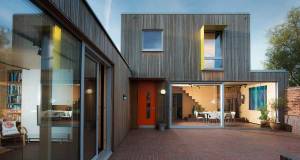 Coasting home - Beautifully designed Hampshire home breezes past passive standard
Coasting home - Beautifully designed Hampshire home breezes past passive standard -
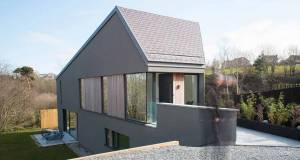 Steeply sustainable - Low carbon passive design wonder on impossible Cork site
Steeply sustainable - Low carbon passive design wonder on impossible Cork site -
 Focus on whole build systems, not products - NBT
Focus on whole build systems, not products - NBT -
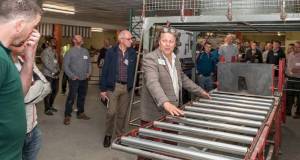 Achieving NZEB event in Cork hears of embodied carbon plans
Achieving NZEB event in Cork hears of embodied carbon plans -
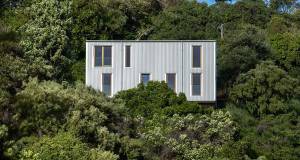 International - Issue 29
International - Issue 29 -
 Passive Wexford bungalow with a hint of the exotic
Passive Wexford bungalow with a hint of the exotic -
 Future proof: designing buildings that withstand climate change
Future proof: designing buildings that withstand climate change -
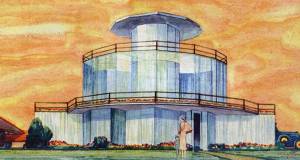 The House of Tomorrow, 1933
The House of Tomorrow, 1933 -
 1948: The Dover Sun House
1948: The Dover Sun House

